
Late 1990-1991
T. J. Thompson of Lansing, Michigan, took over as luthier of Schoenberg Guitars. The Schoenberg logo changed to reflect the change in luthiers:

The instruments bore no internal label. Instead, the inside backstrip was stamped "Schoenberg Guitars / T. J. Thompson / E. Schoenberg".
While following roughly the same arrangement with Martin as his predecessor, Thompson spent considerably more time preparing the 'kits' in his workshop before sending them to Martin for final assembly. He began performing additional operations 'in-house' (rather than having Martin do them in Nazareth), such as neck carving, side bending, gluing of braces to tops, and brace carving. In addition, Thompson began using traditional 'hide' glue, as Martin had done in the 1920's.
During T. J. Thompson's tenure, batch sizes remained generally the same (depending on customer orders received), but were reduced to fewer batches per year due to Thompson's increased involvement in production details at his shop.
T. J. Thompson lecturing.
1992-1994
T. J. Thompson moved to Concord, Massachusetts, where he was assisted by an employee, Lewis Santer.
"I took Ervin Somogyi's guitar building class in 1986, apprenticed for three years in Massachusetts with T. J. Thompson, was the sole employee of Schoenberg Guitars when it was being run by T. J. and Eric Schoenberg, and have been running my own shop since 1995". -- Lewis Santer, Oakland, California
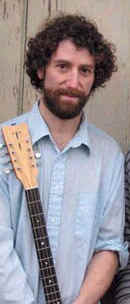
Lewis Santer
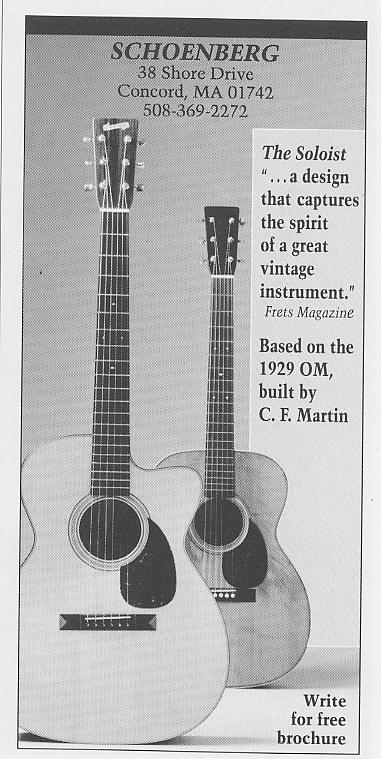
A 1992 Soloist magazine
advertisement.
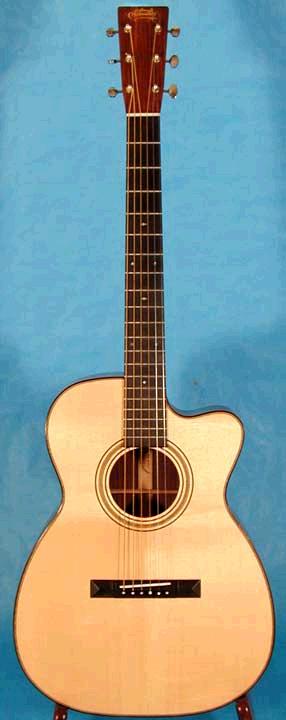
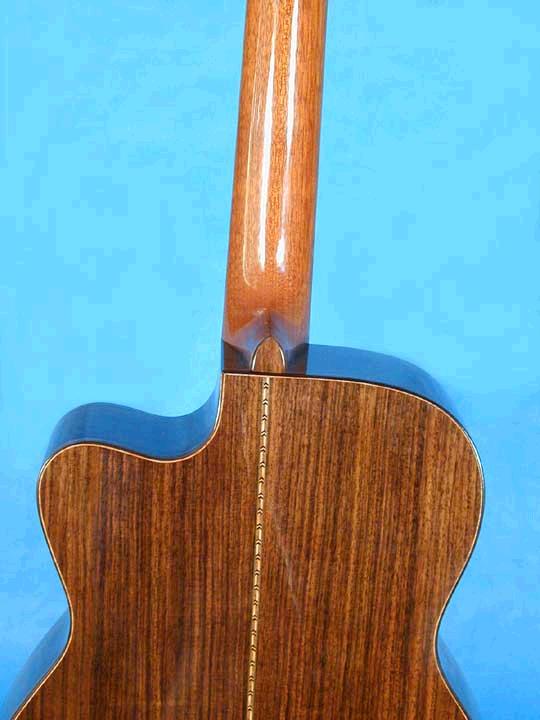
A 1993 T. J. Thompson Schoenberg
Soloist in Adirondack Spruce and Indian Rosewood.
"The last batch we used
Adirondack Spruce and Indian Rosewood and found they compliment one another extremely well. The spruce has qualities of tightness and punch that Brazilian normally
supplies. The spruce has pretty wide grain but, as Mike Longworth used to say all
the time, wide grain can sound great. I've learned that the way the grain looks says nothing about the way it's going to sound. This stuff is as stiff as any Spruce and can be used thin and still be stronger than other Spruces. And sound better. Some Adirondack Spruce I've been using lately is the best sounding top wood I've had on
Soloists".
-- Eric Schoenberg
Schoenberg tapped Thompson's considerable expertise at restoring vintage Martin guitars by having him build (with Martin) replicas of famous Martin guitars under the Schoenberg name. Thus, in addition to the standard Schoenberg Soloists in OM cutaway format, Thompson produced four OM-45 replicas, five 000-30 copies, six OM-28 reissues (with bar frets), and a 12-fret 000-42 (made specifically for Dick Boak).
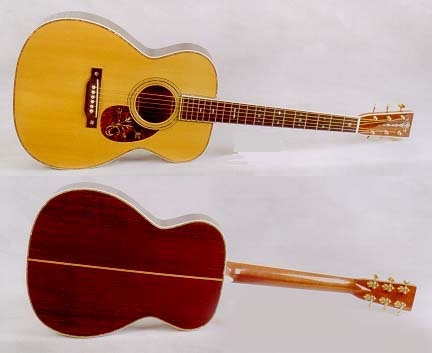
A Schoenberg OM-45, serial # 511,636.


A 1991 Schoenberg 0M-28.
Click here for additional images.

A Schoenberg 000-30.
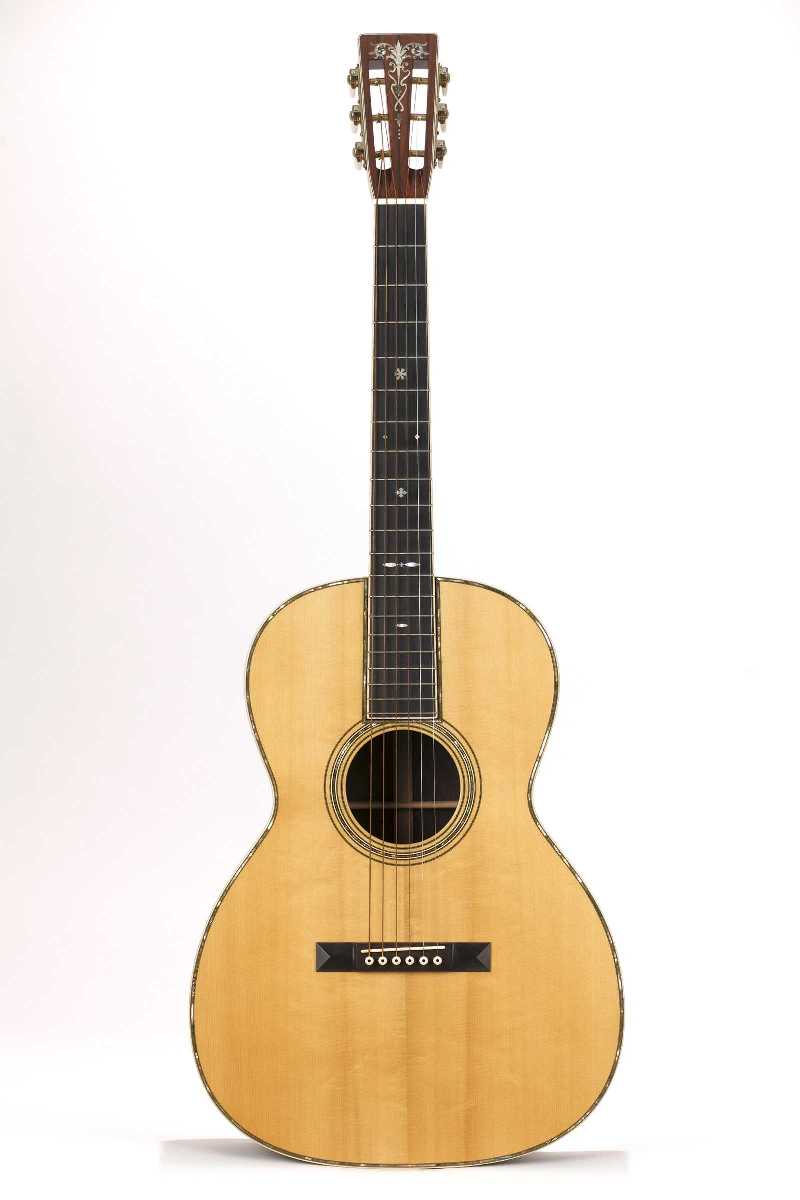
Dick Boak's 000-42
"Soloist". This guitar featured Martin's resurrected
1902 "alternate torch" headstock inlay.

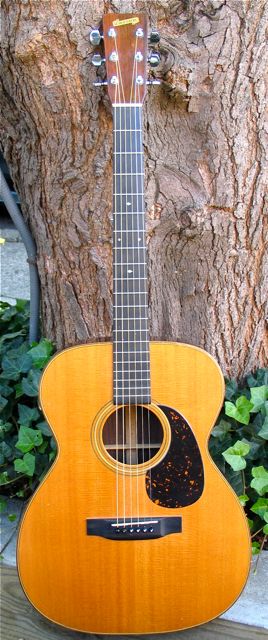
"Rory
Block plays a customized Schoenberg Soloist acoustic guitar, designed by
guitarist Eric Schoenberg and luthier T.J. Thompson in collaboration with
Martin..."
1994

A 1994 Schoenberg magazine
advertisement.
Due to a variety of factors (T. J. Thompson recalls his own list of 26 reasons), including overall costs, warranty coverage, and Martin's increased production levels in their factory, Eric Schoenberg and T. J. Thompson eventually decided to end the Schoenberg Soloist project with Martin.
The last "Martin" Schoenberg Soloist was made in October, 1994. Its serial number is 541,742.
A Note on Production Totals:
From 1987-1994 a grand total of approximately 300 Schoenberg Soloists were made in collaboration with C. F. Martin. Approximately 150 were "Dana Bourgeois" Soloists (1987-1990) while approximately 150 were "T. J. Thompson" Soloists (1990-1994).
Bourgeois built approximately 50 per year while Thompson, utilizing a more "hands-on" approach and building more vintage replicas, built approximately 40 per year.